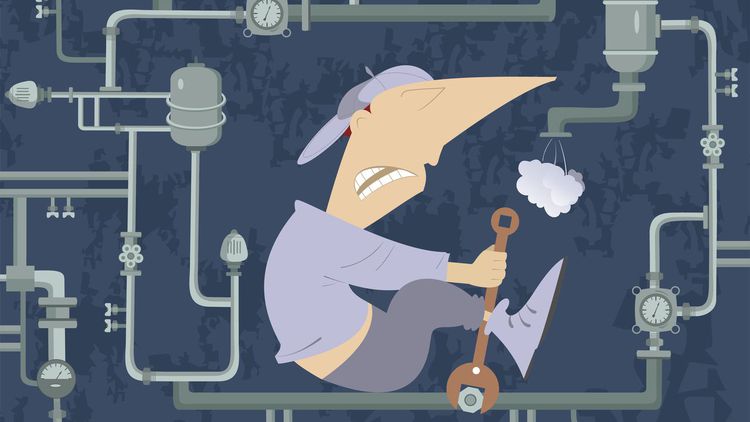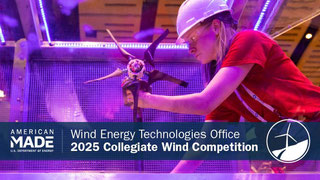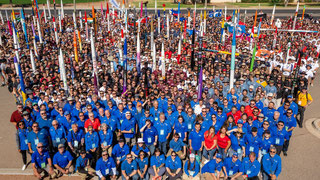Create the manufacturing infrastructure of the future
You’re already on the “frontline” of an industrial plant or facility and you actually understand what’s happening on the floor. We need your insight into the recurring fluid management problems that plague your industry.
The industry could be aerospace, chemical/petrochemical, food processing, life sciences, oil and gas, power, semiconductor, ship building, alternative energy or any other industry with a critical gas or liquid application. The challenge is ideal for someone in engineering, operations, or maintenance.
Do you also have a solution for your problem? We want to hear about that too in our Fluid Genius Challenge!
What you can do to cause a breakthrough
- Click "Follow the Challenge" above to be notified of any status updates to the challenge.
- Click "ACCPET CHALLENGE" above to register for the challenge. This will give you access to the submission form.
- Click on the "Share" button or social media icons above to share this challenge with your friends, your family, or anyone you know who has a passion for discovery.
- Leave a comment in our Forum to join the conversation, ask questions or connect with other innovators.
What are fluid systems? Fluid systems heat, cool, pressurize, purify, produce energy, or in some other way manage a liquid or gas using fluidic components such as (but not limited to) valves, tubing, filters, regulators and fittings.
This challenge is of interest to an international manufacturer and distributor of industrial-grade, stainless steel fluid system components.
Guidelines updated August 3, 2017.
This challenge is of interest to an international manufacturer and distributor of industrial-grade, stainless steel fluid system components. We’re looking for new and creative ways to assemble standard fluid system components to solve a problem that exists in an industrial environment.
What are we asking you to do?
We need your help in identifying problems in an industrial environment that could potentially be solvable using an assembly of standard fluid system components. You do not need to propose a solution, simply identify the problem.
If you do have a solution to the problem you identified, complete the submission form above by clicking ACCEPT CHALLENGE to submit the problem. Then, head over to the Fluid Genius Challenge to submit your solution.
Eligible Industries
We are looking for new uses of assembled fluid system components that could be sold to the following industries. If you have a product idea for an industry not listed here, please comment in the Forum.
- Aerospace
- Alternative Fuel Vehicles
- Automotive
- Biotechnology
- Chemical Plant
- Dairy
- Fine Chemical
- Food and Beverage
- Instruments: Process and Analytical
- Natural Gas Processing Plant
- OEM Machinery
- Offshore Oil & Gas
- Oil Refinery
- Pharmaceutical
- Power Plant
- Pulp & Paper
- Semiconductor
- Tire Manufacturing
Why did we choose these industries?
These industries typically purchase fluid system components like the ones listed below. They often purchase individual components and need to combine the components together to use them. The goal of this initiative is to identify products that can be assembled in unique ways to solve problems, packaged as a system or sub-system, and sold to these industries.
Eligible Fluid System Components
Your assembly design must contain primarily high-quality, stainless steel fluidic components in a size of 2” or less. We recommend you choose primarily from stainless steel components manufactured by Tylok, Swagelok, Hy-Lok or Ham-Let. Components from these websites must comprise a significant amount of the total value of your design and be integral to the design. These websites will provide pricing with a simple registration.
- Tube Fittings are components that connect to tubing.
- Valves regulate, direct or control the flow of a liquid or gas by opening, closing, or partially obstructing various passageways.
- Check and Relief Valves prevent the flow of a liquid or gas in one direction or relieve the pressure.
- Regulators provide reliable pressure control.
- Quick Connects are an easy way to connect and disconnect fluid lines.
- Measurement devices such as gauges, flow sensors, and thermometers
- Tubing can be made in a wide range of sizes, forms, and alloys and other materials such as stainless steel, nylon, and rubber.
- Filters allow you to filter your liquids and gasses, preventing pump contamination and damage.
- Hoses are used to accommodate movement or vibration in a fluid system.
Your assembly design should contain standard products wherever possible. It should not contain newly invented components.
JUDGING CRITERIA
|
Criteria
|
Description
|
% Importance
|
|
Fluid System Components
|
The problem is potentially solvable using fluid system components. While you do not need to design a solution to the problem, you do need to justify why this is a problem that would be of interest to a fluid system component manufacturer or assembler of these components.
|
30%
|
|
Problem
|
The overall problem is well described, including the situation around it.
|
20%
|
|
Impact of the problem
|
The impact of the problem is significant. Impact may be described in terms of downtime, scrap or rework, lower quality product, leaked gas or liquid, labor time, replacement parts, regulatory compliance, environmental damage, unnecessary supplies, wasted or lost energy, or other costs.
|
20%
|
|
Pervasiveness
|
The problem is significant and pervasive, existing across multiple plants and industries.
|
15%
|
|
Crowd Vote
|
All entries which describe a problem in an eligible industry and could potentially be solved using fluid system components will be open for voting. The results of the voting will contribute up to 15% to the judges’ scorecard.
|
15%
|
Challenge Structure
Submit for Preliminary Feedback: Submit your preliminary entry for feedback and review by the judging panel. You may submit your entry at any time. Feedback will be provided within 14 days of submission.
Submit by September 28th, 2017: Submit your final entry by the submission deadline. Up to the top four submissions, as ranked by the expert judging panel against the criteria below and with input from the crowd, will receive $5,000 each.
Timeline
|
Enter
|
August 3, 2017
|
|
Submission Deadline
|
September 28, 2017 at 4:59 pm EDT.
|
|
Crowd Voting
|
October 3 to October 17, 2017
|
|
Winners Announced
|
October 31, 2017
|
Submission Form
Your submission will be public on the challenge page. You may submit more than one entry to this challenge.
- Describe the fluid system and the associated problem. Remember, your problem must exist in an industrial environment, in at least one of the eligible industries, and be solvable using the eligible fluid system components. (2000 characters max)
- Select the industry/industries in which this problem occurs [check boxes]
- What does the fluid system do? How does the problem you have identified impact the fluid system’s function? (1000 characters max)
- Explain how the system you described involves the use of fluid system components? Hint: this is a good indication of whether or not the problem you have described could be solved using fluid system components. Refer to the list of eligible components in the challenge guidelines. (1000 characters max)
- Speculate on how this problem could be solved using the eligible fluid system components. You do not need to propose a complete design. (1000 characters max)
- What are the system’s operating parameters? Consider parameters such as temperature, pressure, system media, the amount of flow required, types of controls, etc. (1000 characters max)
- What conditions exist when you see (or expect to see) the problem? (1000 characters max)
- How is the problem monitored today (if applicable)? (1000 characters max)
- How pervasive is the problem in your plant (depth of the problem)? How pervasive is this problem in other industries and applications (breadth of the problem)? Problems that occur in multiple areas of the plant and in other plants like yours and problems that occur across different industries will be most favorably considered. (1000 characters max)
- What is the impact of the problem? The impact may be described in terms of downtime, scrap or rework, lower quality product, leaked gas or liquid, labor time, replacement parts, regulatory compliance, environmental damage, unnecessary supplies, wasted or lost energy, labor costs, or other costs. Use your answer to (9) to assist you in quantifying the impact of the problem across multiple plants and/or industries. Note that a cost can be either an expense or a lost opportunity to conduct the process in a better way. (1000 characters max)
- Upload any supporting materials (optional).
Additional Rules
Participation Eligibility: The Challenge is open to all individuals, private teams, public teams, and collegiate teams. Teams may originate from any country. Submissions must be made in English. All prize-related communication will be in English.
No specific qualifications or expertise in working with fluid management systems is required.
To be eligible to compete, you must comply with all the terms of the Challenge as defined in the Challenge-Specific Agreement.
Registration and Submissions: Submissions must be made online (only), via upload to the HeroX.com website, on or before dates noted on the timeline.
Intellectual Property: This is a problem definition only. As such, we anticipate submissions will not contain any intellectual property. If any intellectual property is contained within the submission, it will remain with the innovator.
Judging Panel: The determination of the winners will be made by a group of people including thought leaders, influencers, and people with unique insight for fluid systems management. Judges will have expertise in different industries that use fluid control equipment and components; in the design, installation and maintenance of fluid control systems; or in the operations and/or business management where fluid control processes are used. The Challenge Sponsor reserves the right to not award any prizes



.jpg)




